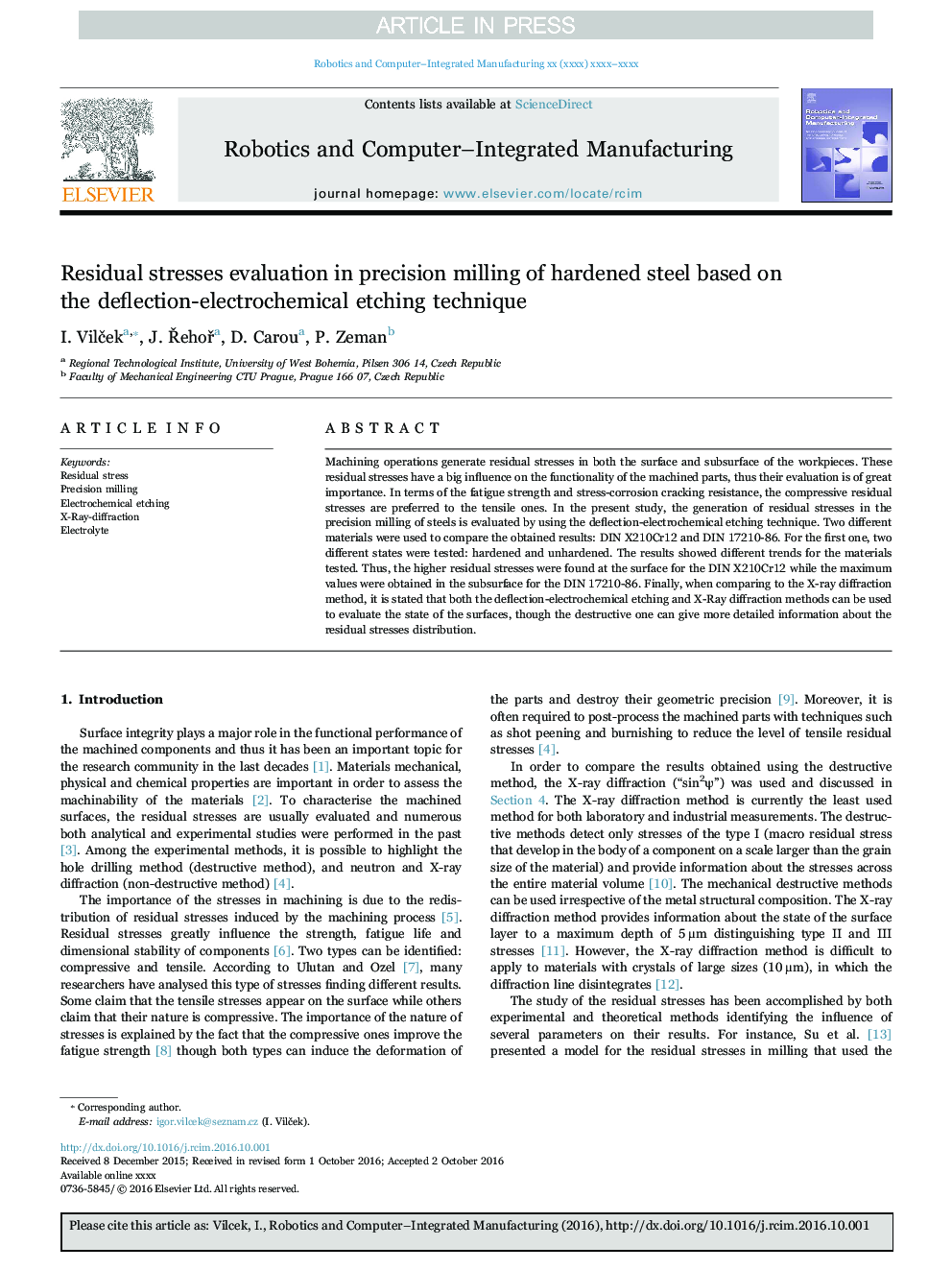| Article ID | Journal | Published Year | Pages | File Type |
|---|---|---|---|---|
| 4949015 | Robotics and Computer-Integrated Manufacturing | 2017 | 5 Pages |
Abstract
Machining operations generate residual stresses in both the surface and subsurface of the workpieces. These residual stresses have a big influence on the functionality of the machined parts, thus their evaluation is of great importance. In terms of the fatigue strength and stress-corrosion cracking resistance, the compressive residual stresses are preferred to the tensile ones. In the present study, the generation of residual stresses in the precision milling of steels is evaluated by using the deflection-electrochemical etching technique. Two different materials were used to compare the obtained results: DIN X210Cr12 and DIN 17210-86. For the first one, two different states were tested: hardened and unhardened. The results showed different trends for the materials tested. Thus, the higher residual stresses were found at the surface for the DIN X210Cr12 while the maximum values were obtained in the subsurface for the DIN 17210-86. Finally, when comparing to the X-ray diffraction method, it is stated that both the deflection-electrochemical etching and X-Ray diffraction methods can be used to evaluate the state of the surfaces, though the destructive one can give more detailed information about the residual stresses distribution.
Related Topics
Physical Sciences and Engineering
Computer Science
Artificial Intelligence
Authors
I. VilÄek, J. ÅehoÅ, D. Carou, P. Zeman,
